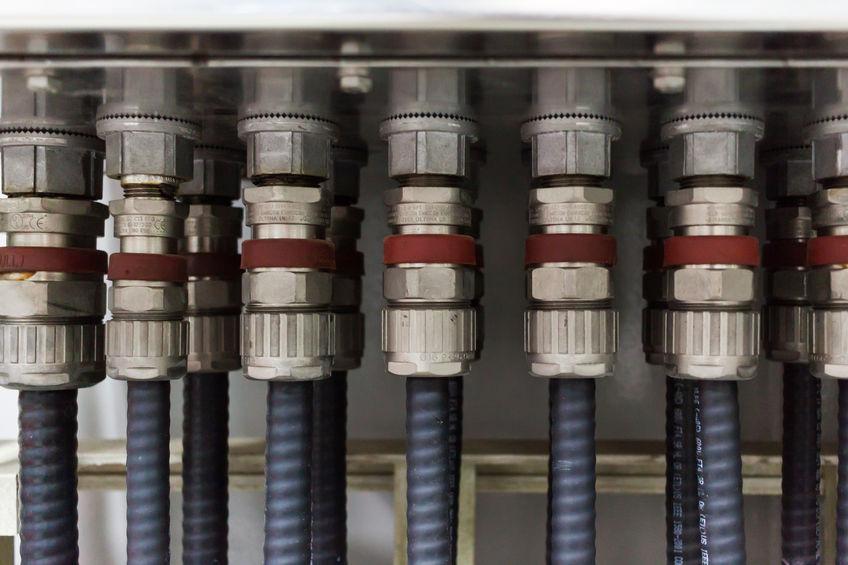Introduction to Cable Gland Manufacturing
The manufacturing of cable glands involves several key stages, each contributing to the final product's quality, durability, and performance. From material selection to final inspection, the process is designed to ensure that each cable gland meets stringent standards. This ensures they can reliably perform their role in securing and sealing cable entries in various applications, from industrial machinery to residential electrical systems.
Cable glands play an essential role in the safety and functionality of electrical systems, serving as the critical interface between cables and the devices they connect to. This article delves into the manufacturing process of cable glands, highlighting the meticulous steps involved in producing these indispensable components.
Material Selection: The Foundation of Quality
The first step in manufacturing cable glands is selecting the appropriate materials. Materials are chosen based on the intended application of the cable gland, including factors such as:
- Environmental resistance: Materials must withstand exposure to elements like moisture, chemicals, and UV radiation.
- Mechanical strength: The material should be durable enough to endure mechanical stresses without deforming or breaking.
- Electrical properties: Non-conductive materials are preferred for electrical insulation, while conductive materials are used where grounding is required.
- Common materials include brass, stainless steel, aluminum, and various plastics, each offering distinct advantages in different environments.

Design and Engineering: Tailoring to Application Needs
The design phase involves creating detailed blueprints of the cable gland, considering aspects such as size, thread type, and sealing mechanisms. This stage is crucial for ensuring the cable gland will fit the intended cable and enclosure perfectly. Advanced software is used to simulate the cable gland's performance under various conditions, allowing engineers to make necessary adjustments before moving to production. This meticulous design process ensures that the final product can meet the specific requirements of its intended application, from high-pressure industrial settings to outdoor environments.
Molding and Machining: Shaping the Components
Once the design is finalized, the manufacturing process can begin. For metal cable glands, this typically involves machining, where metal rods or sheets are precisely cut, drilled, and threaded to create the gland's body and other components. Plastic cable glands, on the other hand, are usually made through injection molding, a process where melted plastic is injected into a mold of the gland's shape and then cooled to form the part. Both methods require sophisticated machinery and skilled operators to ensure that each component meets exact specifications.
Assembly and Sealing: Ensuring Integrity
After the individual components are manufactured, they are assembled to form the complete cable gland. This process often involves:
- Fitting sealing elements: Rubber or synthetic seals are inserted to ensure the gland provides a tight, moisture-resistant closure around the cable.
- Installing clamping mechanisms: These components, which secure the cable in place, are added to prevent strain on the electrical connections.
- Quality checks: Each assembled cable gland undergoes a series of quality control tests to ensure it meets the required standards for sealing, strength, and functionality.
Testing and Quality Control: The Final Verdict
The last stage in the manufacturing process is rigorous testing and quality control. Cable glands are subjected to various tests to simulate real-world conditions, including:
- Pull tests: To verify the gland's grip on the cable.
- Ingress protection (IP) tests: To ensure the gland's effectiveness against dust and water entry.
- Temperature and pressure tests: To confirm the gland's performance under extreme conditions. These tests ensure that only cable glands that meet all performance criteria make it to the market, guaranteeing their reliability in securing and protecting cable connections.
Innovation and Sustainability: Future Directions
The manufacturing process of cable glands is continually evolving, with innovations aimed at improving efficiency, reducing environmental impact, and meeting the changing needs of industries. Sustainable practices, such as recycling materials and reducing energy consumption, are increasingly becoming a focus in the production process. Additionally, advancements in materials science and manufacturing technology promise to enhance the performance and versatility of cable glands in the future.
Conclusion
In conclusion, the manufacturing of cable glands is a complex process that requires careful attention to detail at every stage. From selecting the right materials to conducting thorough quality tests, each step is designed to ensure that the final product can reliably fulfill its essential role in electrical installations. As technology and industry requirements evolve, so too will the processes involved in producing these critical components, ensuring they continue to meet the needs of a wide range of applications.
Note :- To Read More Articles Visit on- reviewsconsumerreports










